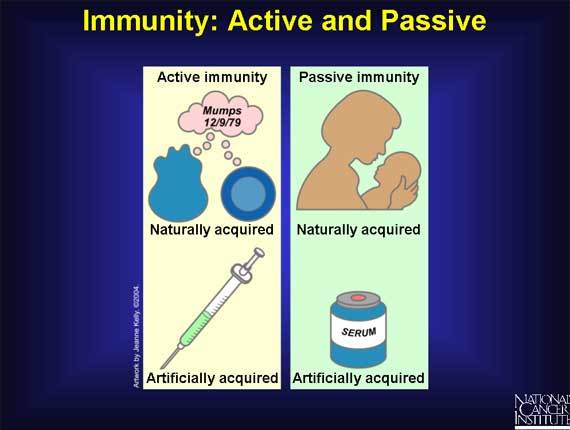FA16 Immunization Module’s Updates
Active vs Passive Immunity
Immunity is best defined as the body’s ability to eradicate microbes or pathogens and to subsequently prevent further cases of reinfection. These functions are carried out by the innate and adaptive immune systems. The innate immune system is the fast acting immune system, which is not very diverse and does not contain memory cells. The adaptive immune system is slower acting, but contains memory cells and is much more diverse than the innate immune system. Two ways to activate the immune system is through passive and active immunity. Both passive and active immunity produce antibodies against foreign pathogens.
Passive immunity is when antibodies are introduced into your body, but these antibodies were not produced in your own body. The antibodies are of foreign nature. One well known example of passive immunity is maternal immunity being passed on to the fetus. Maternal antibodies IgG cross the placenta to the reach the fetus. Maternal antibodies IgA reach the fetus through breast milk. Another example of passive immunity is taking antibodies from horses and transferring them to patients. Passive immunity is critical for new born babies who have not developed their own immune systems well enough to fight infections on their own.
Active immunity is when antibodies are produced by your own body. Active immunity occurs when someone is exposed to a pathogen which results in the production of antibodies against the antigen. Active immunity can also be acquired by artificial exposure to an antigen through a vaccination. The following picture is a well depiction of the differences between active and passive immunity:
link: url



That image is really great and makes it easier to understand the concepts. Good job!
So I wonder @Leah Patton, this seems to support the idea that sick children make healthy adults. So are overprotective mothers doing their children a disservice when trying to keep them clean all the time? It sounds like the more a child is exposed to sub-lethal doses of just about anything, the better his or her immunity will be as the child grows up. Perhaps its a good thing the FDA is recalling antimicrobial or antibacterial soaps and what not. It sounds like it could theoretically stunt the immunity of the American people.
I think you explained the concept very well and made them easy to understand. I really like the picture attached showing the differences between naturally acquired versus artificially acquired.
@Leah Patton, this is a great start to this thread. Would love to see a follow up on the key point that @Alexander Tang has raised.
Nice writeup! Hopefully longer lasting Ig's that will stay in the body for months/years will be developed for some immune deficiencies.
Great post, Leah! I wonder what clinical indications are associated with passive versus active immunization, and for what reasons.
Very well done Leah. I wonder how the strength of active immunity varies when it is naturally acquired versus artificially acquired.
Good job Leah!